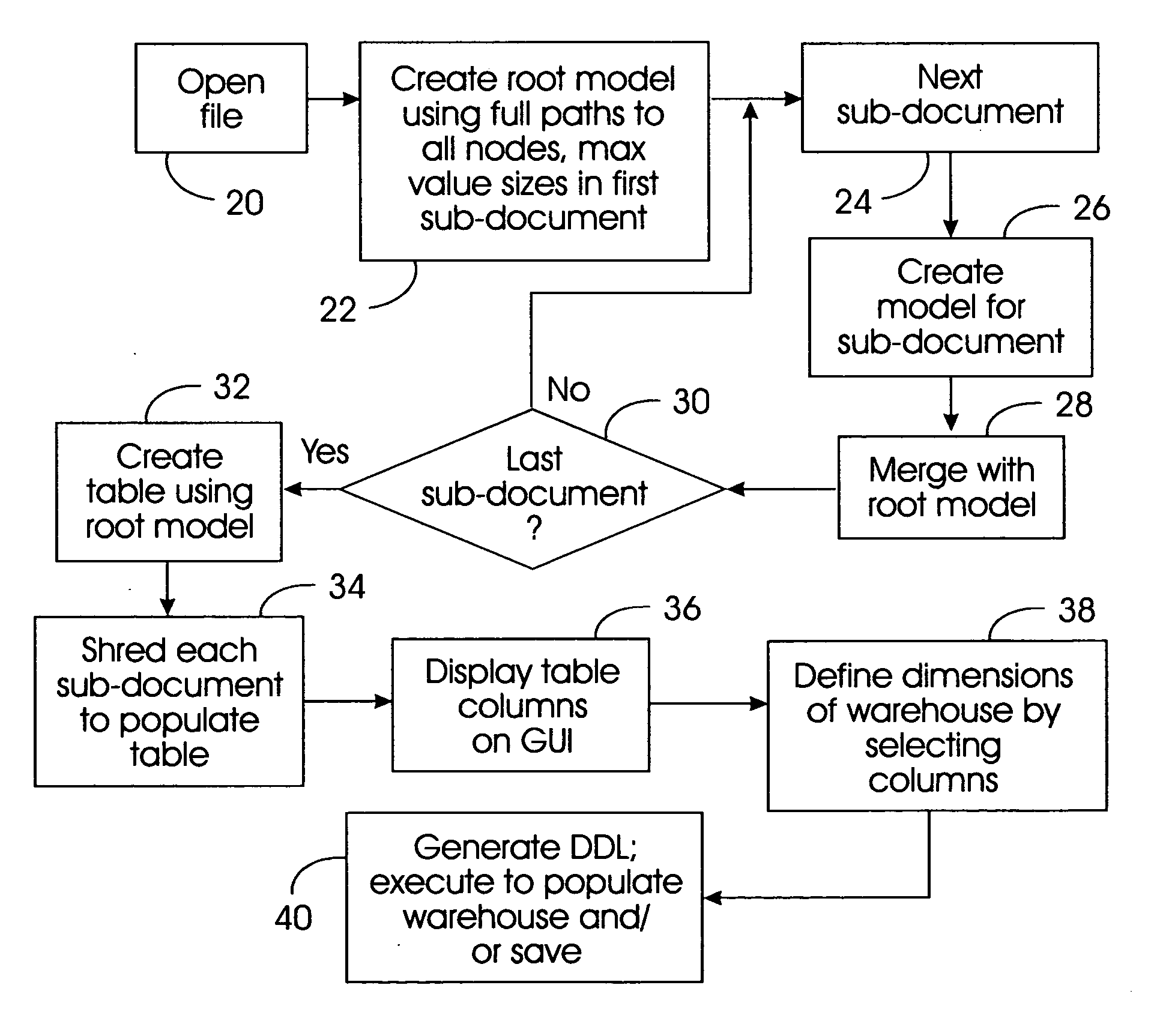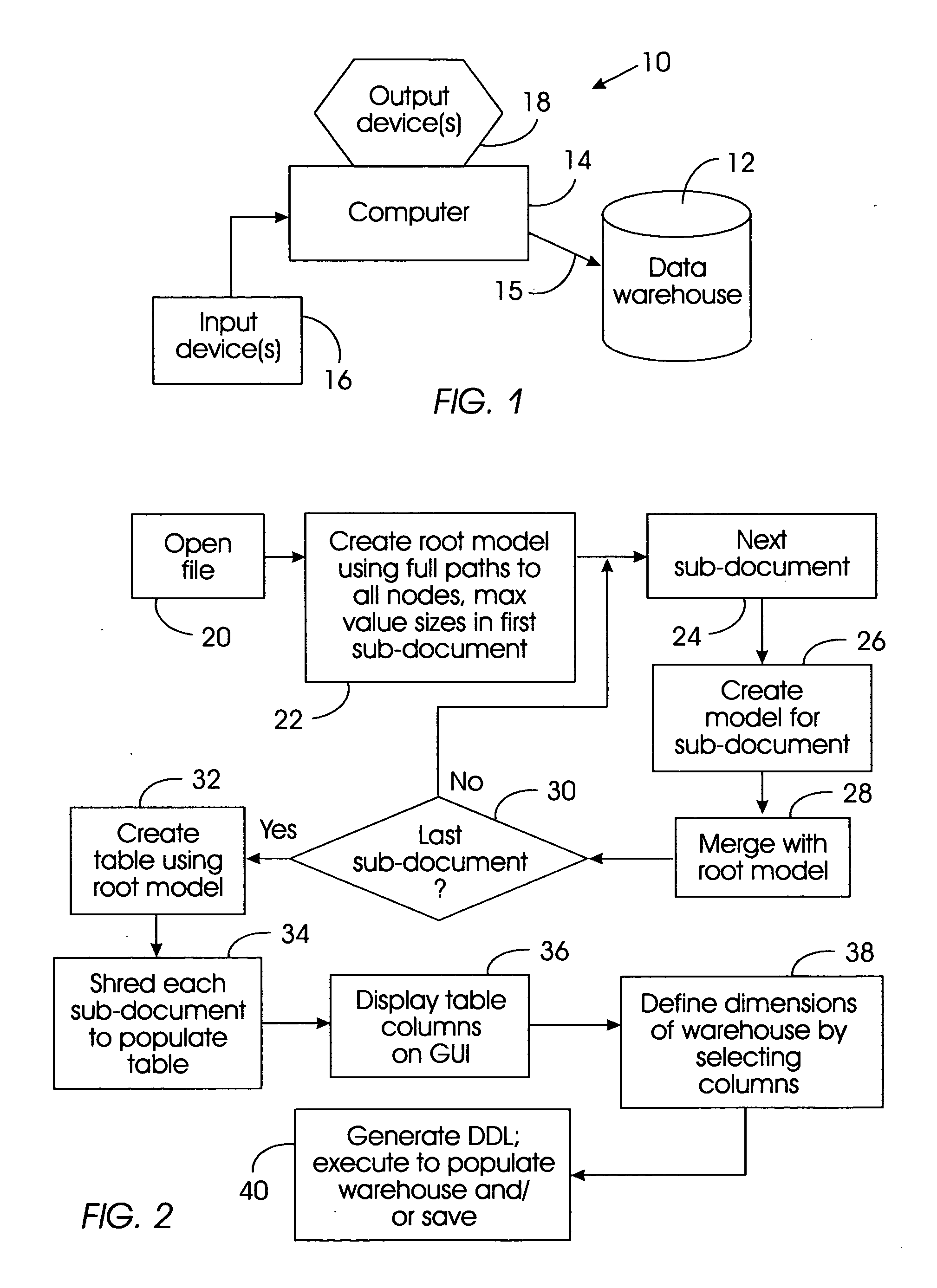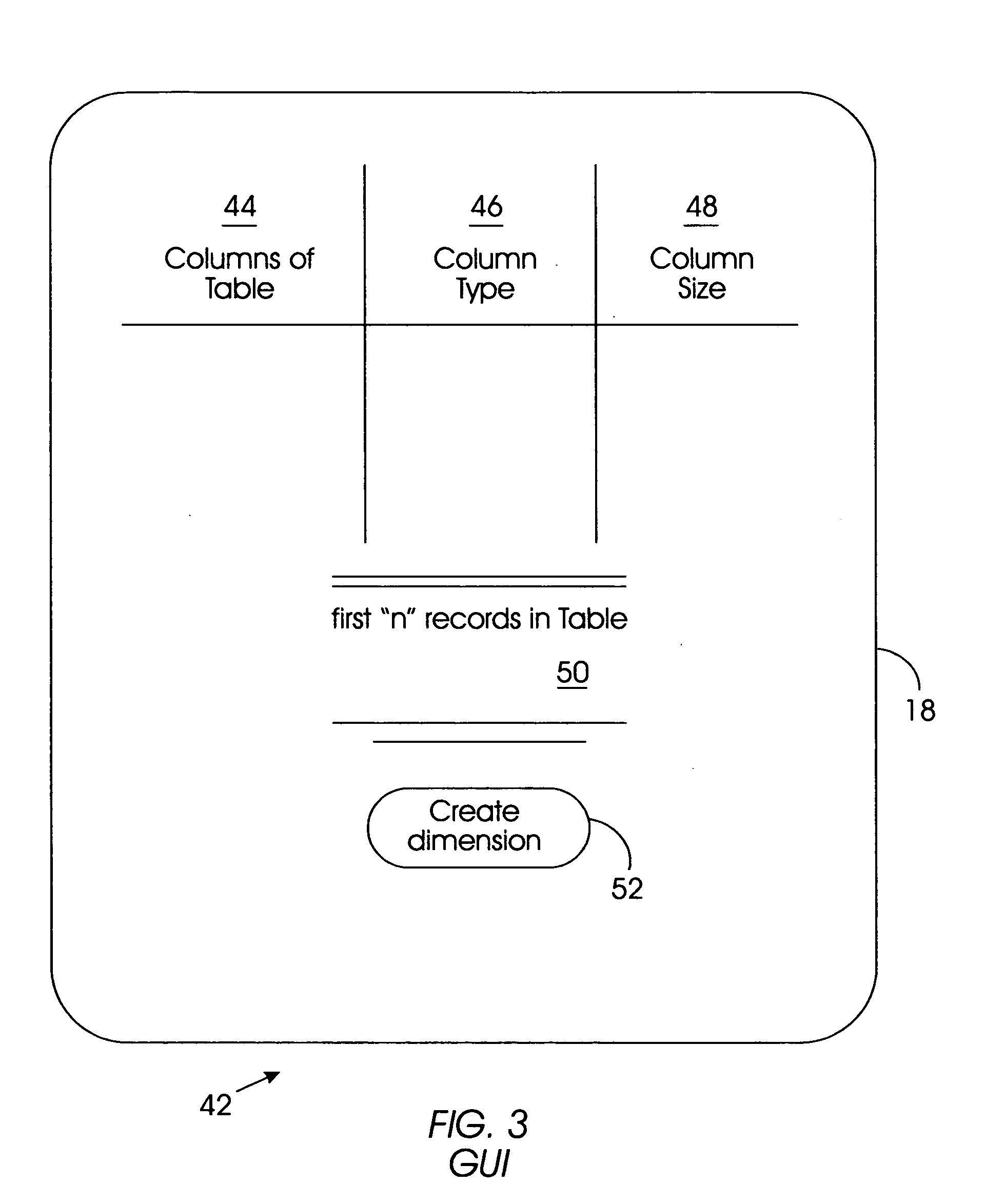Method and system for creating and loading data warehouse from semi-structured document
a data warehouse and semi-structured technology, applied in the field of creating and loading data warehouses from semi-structured documents, can solve the problems of many times these files are missing, performance drawbacks, and no tools that integrate creating schemas and “shredding” documents
- Summary
- Abstract
- Description
- Claims
- Application Information
AI Technical Summary
Benefits of technology
Problems solved by technology
Method used
Image
Examples
Embodiment Construction
[0019] Referring initially to FIG. 1, a system is shown, generally designated 10, that can include one or more data warehouses 12 that are created and populated in accordance with the disclosure below. A computer 14 for executing the present logic accesses the data warehouse 12 over a communication path 15. The path 15 can be the Internet, and it can be wired and / or wireless.
[0020] The computer 14 can include one or more input devices 16, such as a keyboard or mouse, for inputting data to the computer 14, as well as an output device 18, such as a monitor. The computer 14 can be a personal computer made by International Business Machines Corporation (IBM) of Armonk, N.Y. that can have, by way of non-limiting example, a 933 MHz Pentium®III processor with 512 MB of memory. Other digital processors, however, may be used, such as a laptop computer, mainframe computer, palmtop computer, personal assistant, or any other suitable processing apparatus such as but not limited to a Sun® Hotsp...
PUM
 Login to View More
Login to View More Abstract
Description
Claims
Application Information
 Login to View More
Login to View More - R&D
- Intellectual Property
- Life Sciences
- Materials
- Tech Scout
- Unparalleled Data Quality
- Higher Quality Content
- 60% Fewer Hallucinations
Browse by: Latest US Patents, China's latest patents, Technical Efficacy Thesaurus, Application Domain, Technology Topic, Popular Technical Reports.
© 2025 PatSnap. All rights reserved.Legal|Privacy policy|Modern Slavery Act Transparency Statement|Sitemap|About US| Contact US: help@patsnap.com



